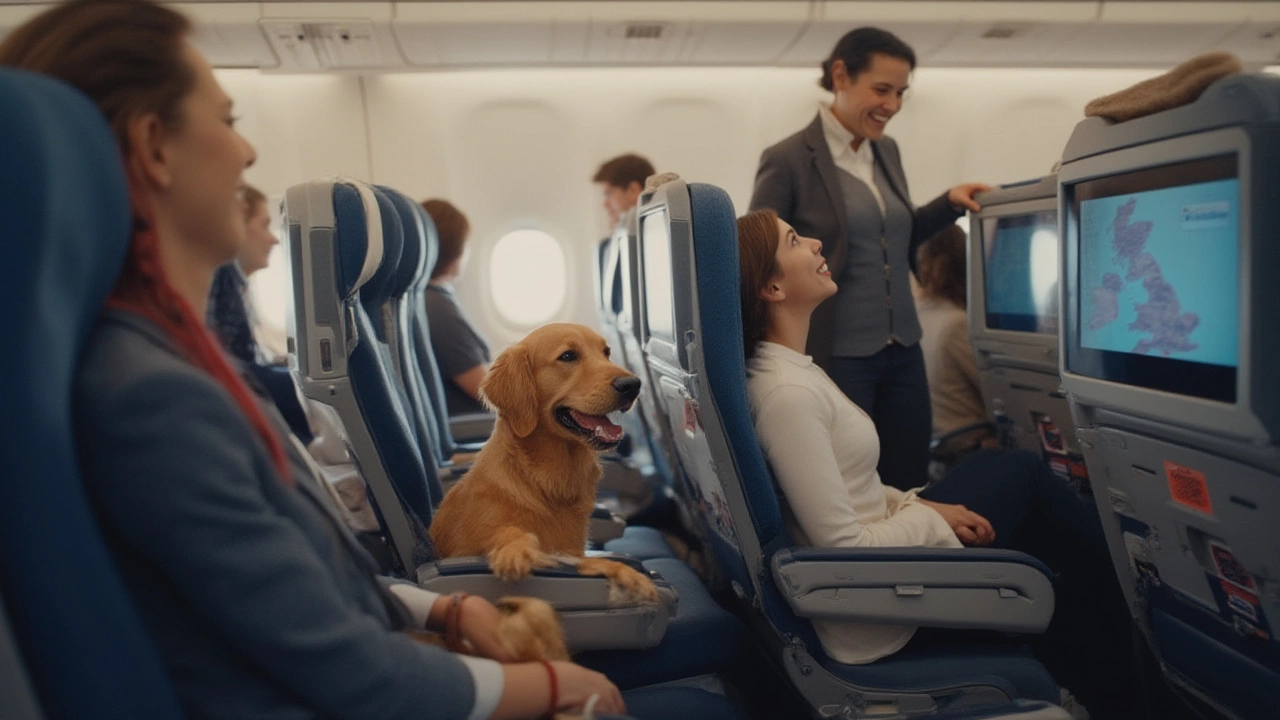Airline Pet Policies: What You Need to Know Before You Fly
Planning a trip with your dog or cat? The biggest hurdle is often the airline’s pet policy. Each carrier has its own set of rules, fees, and paperwork, and missing a detail can turn a smooth journey into a nightmare. Below we break down the most common requirements, share money‑saving tips, and point out where you can find the latest updates.
Where to Find the Rules and When to Check
Start by visiting the airline’s website at least a month before you book. Look for a dedicated "Pet Travel" or "Animals" section. Airlines usually list:
- Allowed species and sizes
- Carrier dimensions for cabin and cargo
- Health certificate and vaccination timelines
- Seasonal restrictions (many carriers limit pet cargo in summer)
- Exact fees for each travel class
If the site is hard to navigate, call the airline’s pet desk. A quick phone call can confirm if your pet’s breed is restricted (e.g., brachycephalic dogs) and whether you need a microchip ID.
Choosing the Right Carrier
Airlines judge a carrier by its size, not the pet’s weight. The rule of thumb is that the pet must be able to sit, stand, and turn around comfortably. Soft‑sided carriers are often accepted for cabin travel, while hard‑shell containers are required for cargo.
Measure the carrier inside and compare it to the airline’s maximum dimensions. A common cabin limit is 45 cm × 30 cm × 23 cm (18 × 12 × 9 in). For cargo, dimensions can double, but the container must be sturdy, have ventilation holes on all sides, and a secure latch.
Label the carrier with your contact info, the pet’s name, and a “Live Animal” sticker if it’s going in cargo. Slip a small water dish into the carrier and fill it with fresh water shortly before boarding.
Paperwork You Can’t Skip
Most airlines require a health certificate issued by a vet within ten days of travel. The certificate should confirm the pet is free of contagious diseases and list all vaccinations. Some destinations also need an import permit, especially if you’re flying internationally.
Keep copies of the certificate, vaccination record, and any airline confirmation email in a folder you can pull out at check‑in. If you’re traveling to the US from abroad, you’ll need a USDA‑approved health certificate.
Cost Management: How to Keep Fees Low
Pet fees vary widely. Domestic carriers often charge £40‑£80 for a cabin pet, while cargo fees can top £200. Some low‑cost airlines don’t accept pets at all, so avoid them if you have a furry friend.
Tips to save money:
- Book early—some airlines lower fees for early reservations.
- Travel on weekdays; weekend flights tend to be pricier for pets.
- Combine pet fees with a flexible ticket to avoid change penalties.
- Consider a loyalty program—frequent flyers sometimes get reduced pet charges.
Day‑Of‑Travel Checklist
Before you head to the airport, run through this quick list:
- Confirm pet reservation and fee payment.
- Pack a travel kit: leash, waste bags, small food bowl, and a comfort toy.
- Label the carrier inside and out.
- Give your pet a light walk to burn off energy.
- Arrive at the airport at least two hours early for domestic flights, three for international.
When you reach the gate, ask the crew to double‑check the carrier’s placement. If you’re using cargo, ask for the exact location of the pet hold and the expected temperature.
Following these steps will help you avoid surprises and keep your pet safe and comfortable. Happy travels!
Posted By Bryndle Redding On 22 Jul 2025 Comments (0)
Can I Buy My Dog a Plane Seat? Rules, Tips, and Airline Policies for Dog Owners
Unpack what it really looks like to buy your dog a seat on a plane: costs, rules, real airline policies, surprising facts, and first-hand tips for jet-setting pups.
READ MORE